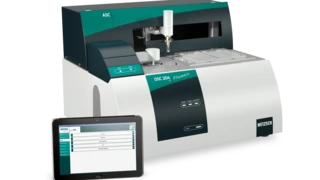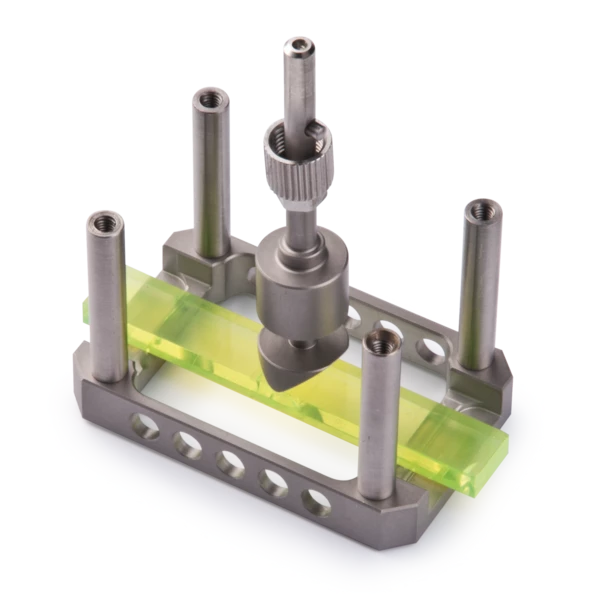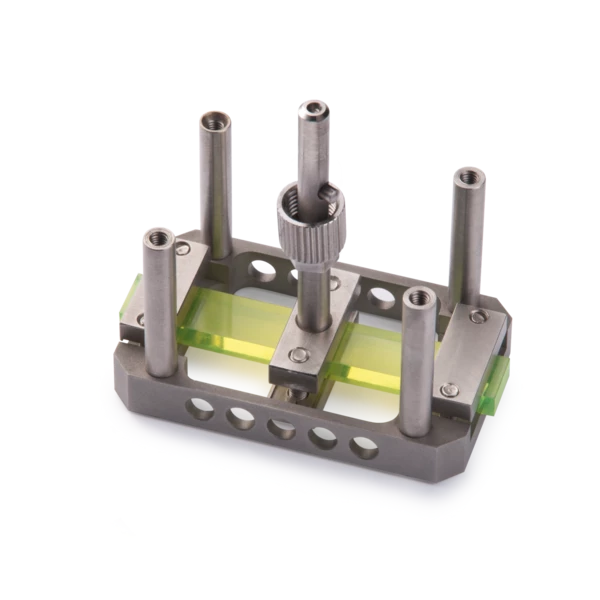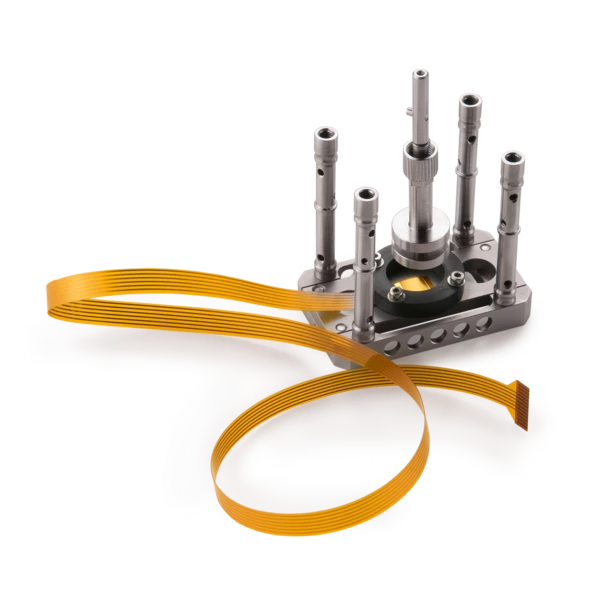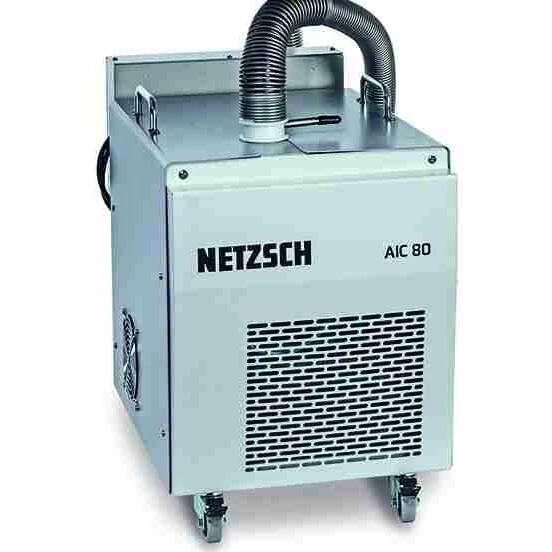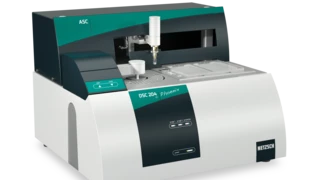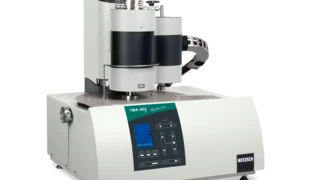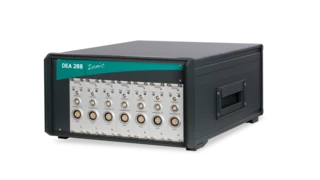The Most Versatile DMA in the World
The new DMA 242 E Artemis combines ease of handling with the user-friendly Proteus® measurement and evaluation software. This makes it fast and easy to characterize the dynamic mechanical properties as a function of frequency, temperature and time.
Its modular design along with a wide variety of sample holders and cooling systems allow the DMA 242 E Artemis to handle a broad range of applications and samples.
Various add-on options make it the ideal device for any laboratory and a safe investment for the long-term.
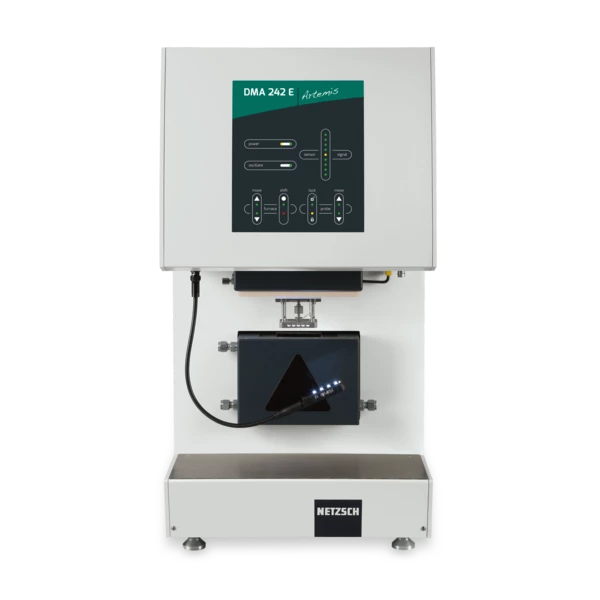
Hang-down design
for easy accessibility, handling and changing of the different sample holders
Over 30 different sample holders
for optimal adjustment of measurement conditions to material properties
Controlled gas flow (inert or oxidizing)
with optimal heat transfer on samples for defined measurement conditions
Various cooling options.
Three different cooling systems; liquid nitrogen-controlled cooling to -170°C, intracooler AIC 80 for measurements below room temperature to -70°C and compressed-air cooling to 0°C with vortex tube
Controlled force range up to 24 N
(12 N static and 12 N dynamic) for measurements of very stiff samples. Increased resolution in the measuring range 4 N static and 4 N dynamic
A stepper motor with a 20-mm travel range
allows for precise testing on materials which exhibit substantial changes in length during a DMA measurement. This is particularly important for the different static experiments available with the DMA 242 E Artemis; i.e., CreepCreep describes a time and temperature dependent plastic deformation under a constant force. When a constant force is applied to a rubber compound, the initial deformation obtained due to the application of the force is not fixed. The deformation will increase with time.creep, RelaxationWhen a constant strain is applied to a rubber compound, the force necessary to maintain that strain is not constant but decreases with time; this behavior is known as stress relaxation. The process responsible for stress relaxation can be physical or chemical, and under normal conditions, both will occur at the same time. relaxation and TMA mode.
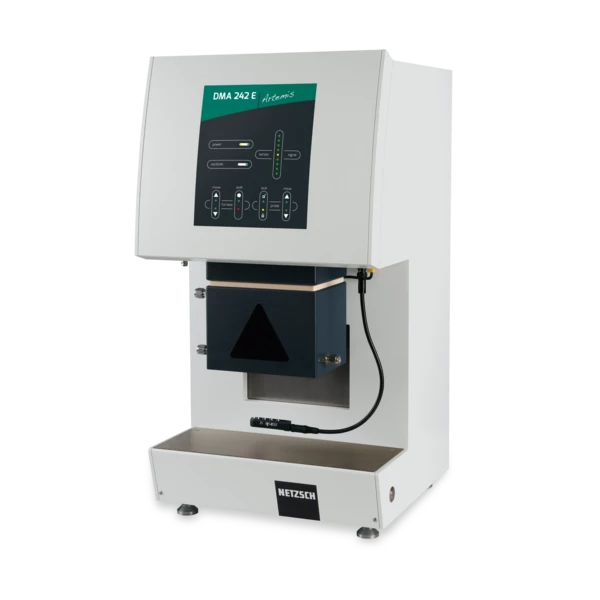
Technical Data
Temperature range
Heating rate
Frequency range
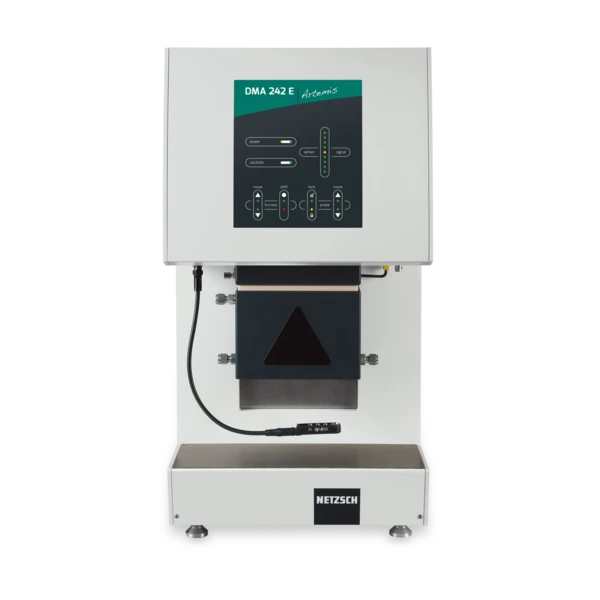
High force range:
24 N (12 N static and 12 N dynamic)
High resolution force range:
8 N (4 N static and 4 N dynamic)
Controlled StrainStrain describes a deformation of a material, which is loaded mechanically by an external force or stress. Rubber compounds show creep properties, if a static load is applied.strain amplitude:
± 240 μm
Static deformation:
Up to 20 mm
Modulus range:
10-3 to 106 MPa
Damping range (tanδ):
0.005 to 100
Application Literature


